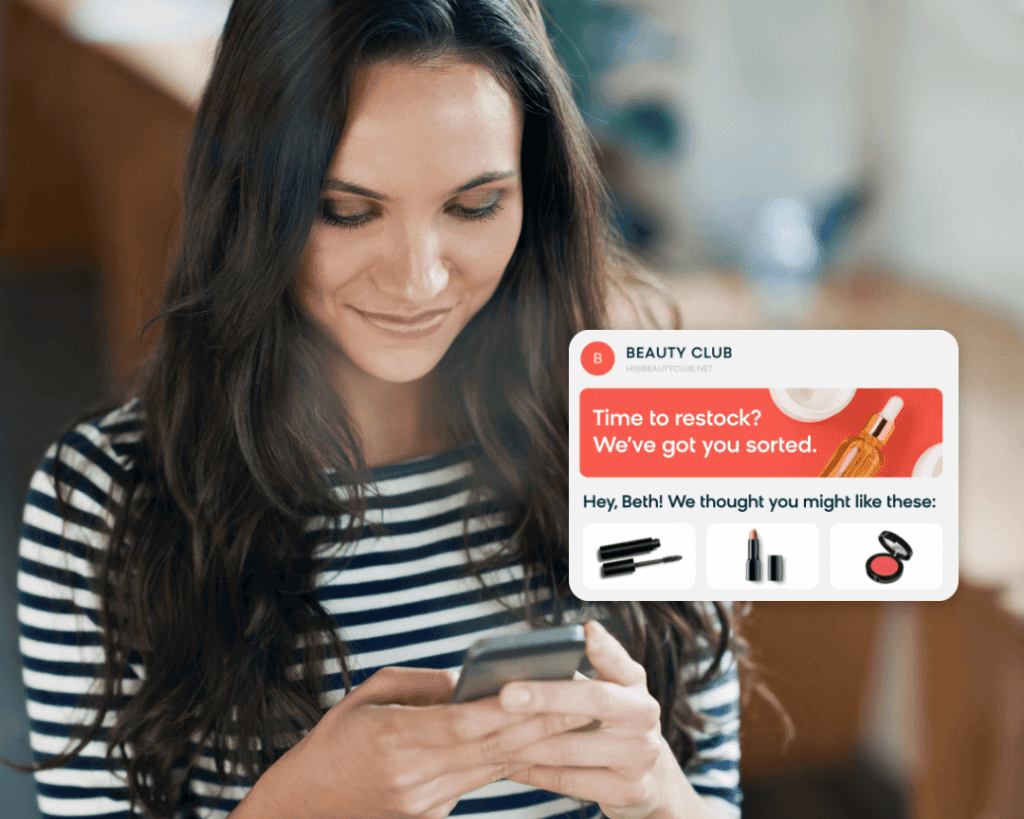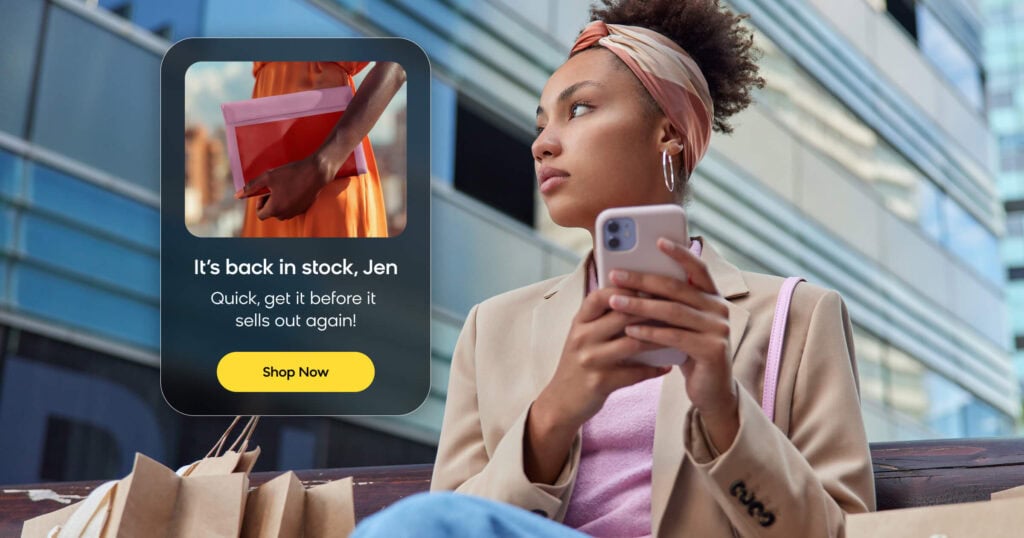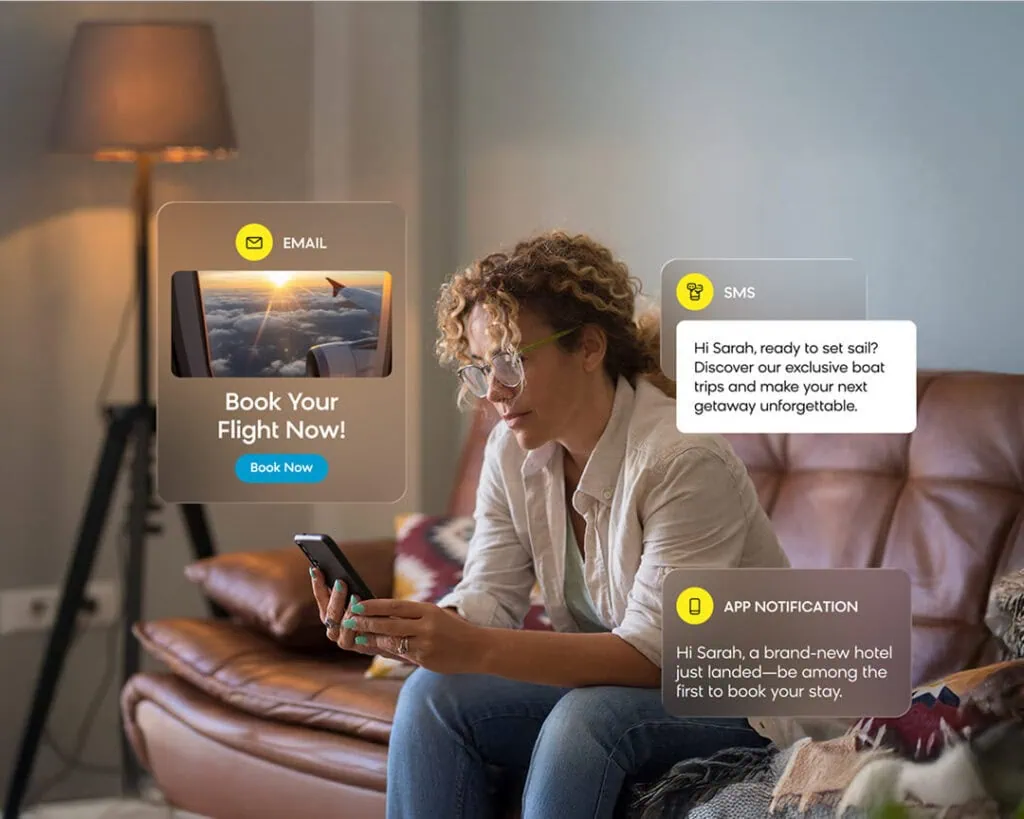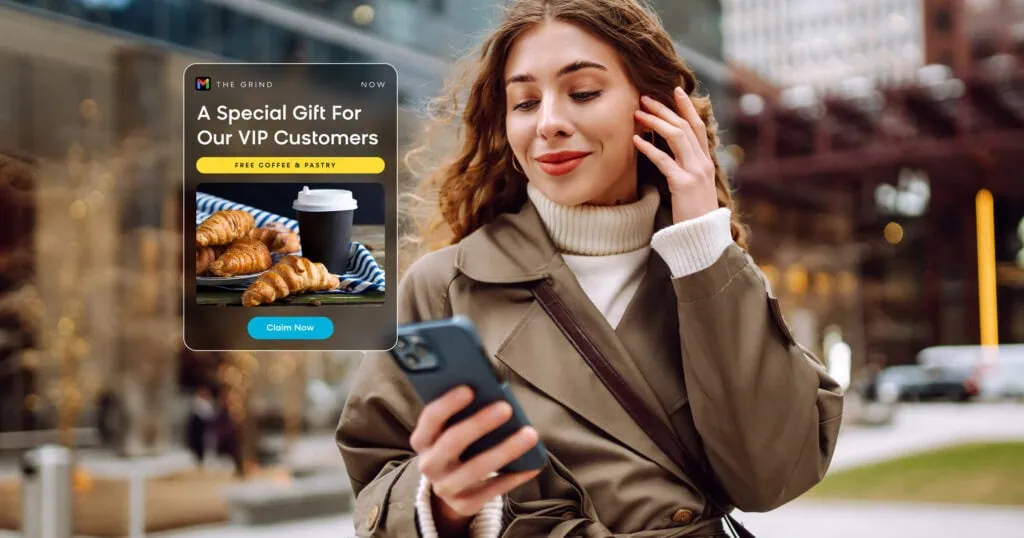The beauty industry is one of the most competitive niches with unique challenges. That’s because, despite economic fluctuations, the sector remains resilient. Plus, ever-evolving trends — driven by social media and beauty influencers — create a continuous demand for innovative products.
This high demand and relatively low entry barriers make the beauty industry attractive to both new entrepreneurs and established companies. To succeed in such a competitive and rapidly changing market, beauty brands need to stay at the top of their game.
At Bloomreach, our goal is to give you an AI-powered solution to supercharge your growth so you can drive more revenue from your marketing campaigns.
Powering our products is Loomi AI, our AI built for ecommerce and trained on an incredible amount of data from how customers shop and search. It knows what your customers want and can help you curate personalized campaigns to improve brand loyalty and boost revenue.
To help you get started, we’re highlighting some of the challenges the beauty industry faces and how Bloomreach can help you implement use cases to drive results.
Notable Insights From the Beauty Industry
As beauty needs evolve, the industry is quickly responding to what consumers want. Here are the top trends affecting the beauty industry in 2024 and beyond:
- The power of micro-influencers: Brands leveraging micro-influencers see an engagement rate of 7%, significantly higher than the average of 3.5% (Influencer Marketing Hub).
- Demand for personalization: 80% of consumers are more likely to purchase from beauty brands that offer personalized experiences (Epsilon).
- Clean beauty’s boom: Growth in the clean beauty market segment is projected to reach $11.6 billion by 2027 (Grand View Research).
- Shared values build trust: 64% of consumers say shared values help them create a trusted relationship with beauty brands (Edelman).
- Men’s grooming market is growing: The global men’s grooming market is expected to reach $78.6 billion by 2024, driven by increased interest in skincare and grooming products (Euromonitor International).
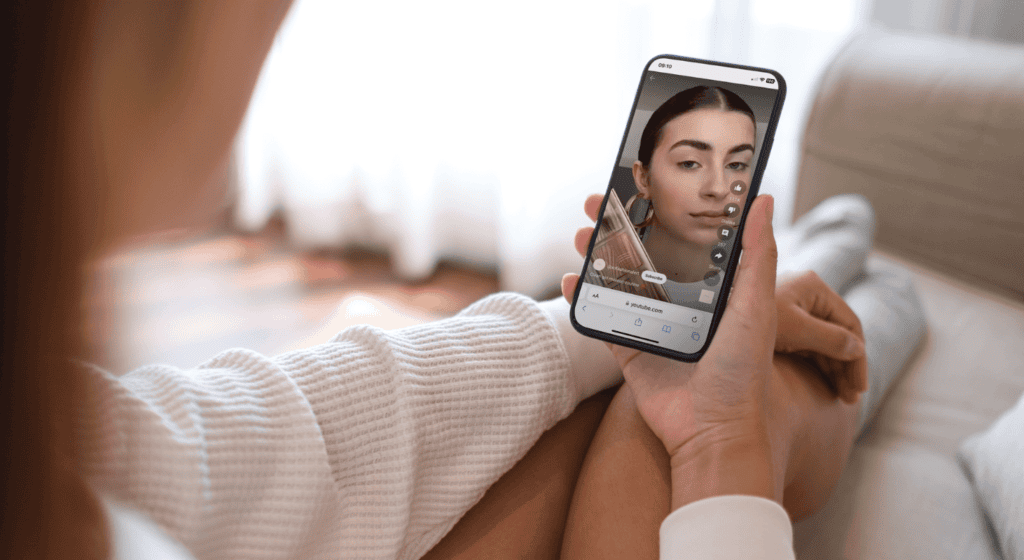
Industry Challenges
It’s important to understand the common challenges many beauty brands encounter to know what your customers expect and how to stand out in a crowded market. Here are a few of them:
Your Product Being Sold by Other Retailers
If your product is sold at multiple retailers, you get a skewed view of your customers’ behavior. For instance, if you see fluctuating sales, it might be hard to tell whether the issue is your product quality or simply the availability of your products elsewhere. Customers might choose to buy from another retailer, which makes it difficult to gauge their true loyalty to your brand.
Driving Brand Loyalty
Driving brand loyalty is more challenging than ever. McKinsey’s report highlights how complex it is to attract modern customers and turn them into repeat buyers. With countless brand choices, consumers have endless options to explore.
Driving Product Loyalty
Today’s consumers are always on the lookout for the next best thing. They love to try new brands and products, which makes it harder for beauty companies to secure their loyalty. To foster product loyalty, brands must create memorable experiences that resonate with their customers.
Boosting Replenishment and Repeat Purchases
It’s not enough to just get customers to buy once. You want them to keep coming back for more. To encourage this repeat engagement, you need to focus on building strong relationships with your customers.
This means providing value beyond just the initial sale. For instance, sending personalized reminders when it’s time for a refill or sharing helpful tips on how to use a product can keep your brand top-of-mind.
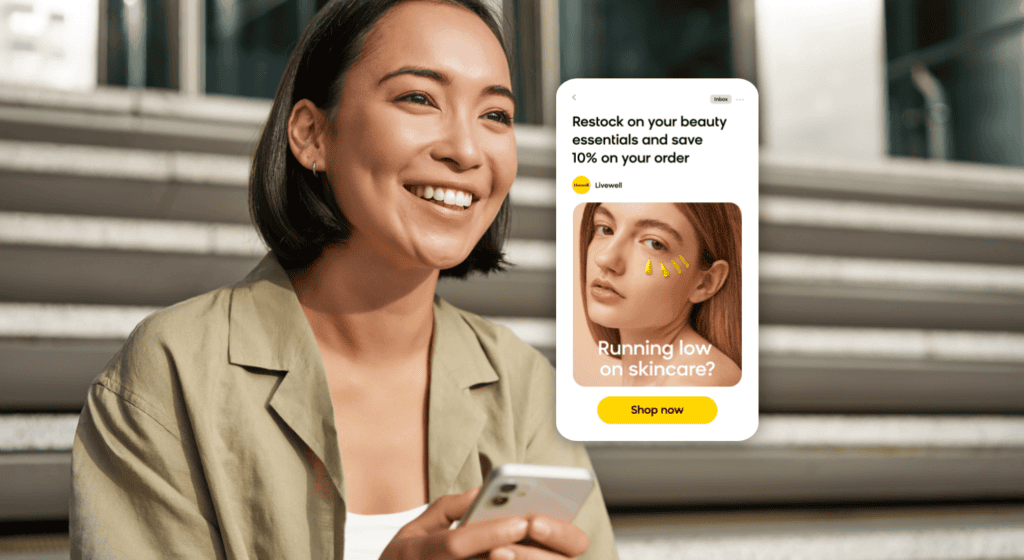
Balancing Competitive Pricing and Costs
Beauty products often have narrow profit margins due to their low retail selling prices and high shipping costs. This means that even if you sell a lot of products, you might not see a significant profit.
Additionally, you might get caught in pricing wars with retailers. As retailers try to match each other’s prices on overlapping products, it puts pressure on both the retailer’s and the brand’s margins. This can make it even harder for you to maintain profitability while still trying to meet consumer expectations for competitive pricing.
Adapting to Current Market Trends
What’s in vogue today might be out of style tomorrow. Staying relevant requires constant vigilance. Brands must be tuned into the latest trends, whether it’s a new ingredient, a sustainable packaging solution, or a shift toward inclusivity in product offerings. If you’re not paying attention, you risk missing the boat and losing your connection with your audience.
Knowing When To Reach Customers
Understanding when and why consumers buy beauty products is key to crafting effective marketing strategies. Beauty purchases often occur during special moments. Here’s a closer look at some typical beauty purchase moments that can drive sales and engagement:
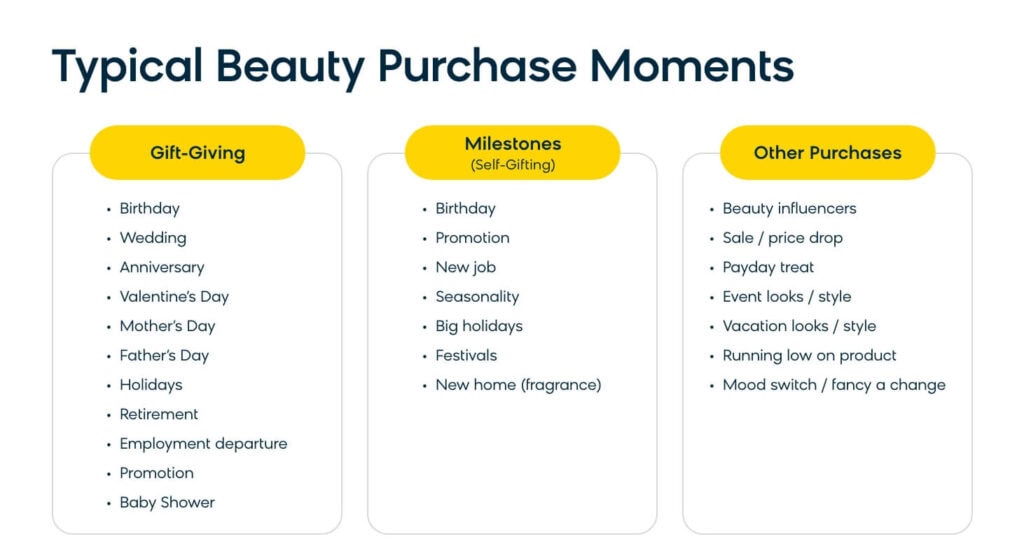
3 Bloomreach Beauty Use Cases To Drive More Revenue
Bloomreach can help you address these challenges in meaningful ways in your marketing strategy. Here are three use cases that have helped our beauty customers drive more revenue time and time again:
Social Proof in Email
Want to beat your competitors? Drive urgency at every step by repeating your on-site social proofing in your email communications.
People are more likely to purchase a product that many others are buying. This is especially true when they’re uncertain about a product. Social proof can help your customers know how popular your product is and convert a hesitant customer into a buyer.
With Bloomreach Engagement, you can add social proof banners to your emails that pull from real-time engagement data. For instance, you can let shoppers know exactly how many other customers are viewing the same item.
By creating a sense of urgency and reinforcing your on-site social proof through email, you can encourage customers to act quickly. The best part: Implementing social proof in your emails is straightforward and doesn’t require generating additional events. Even converting 1% more purchases each month can have a significant impact on how much additional revenue you generate.
Zero-Party Data Capture
Studies show that 71% of modern consumers expect personalized experiences. Zero-party data allows you to use data your customers willingly provide you for better personalization. Using the data, you can connect customers with their desired products and boost revenue and brand loyalty.
When you personalize your campaigns using zero-party data, you can expect a significant lift in engagement — in fact, we’ve seen engagement rates be up to 55% higher compared to typical campaigns.
To collect zero-party data, you can add weblayers on your site, such as interactive forms or gamified elements, to encourage customers to share valuable information. For instance, you can collect information on your customer’s shade, skin type, hair, and eye color to create a more tailored beauty shopping experience.
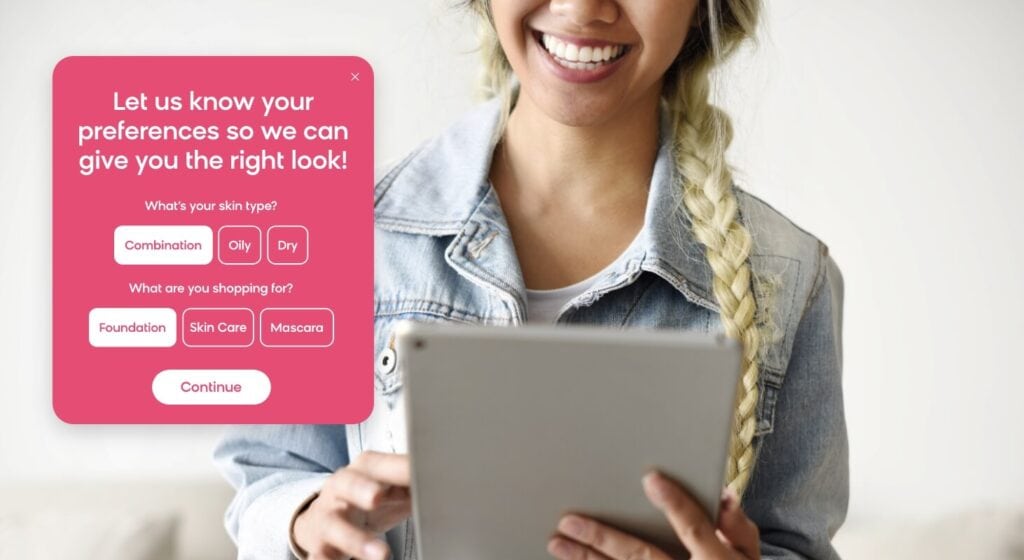
Bloomreach gives you access to dashboards that demonstrate engagement with zero-party weblayers, allowing you to leverage this data across all marketing channels. Plus, with analytics notifications, you can monitor the performance of your weblayer and use the insights gathered to power personalized recommendations.
Ultimately, engaged, contactable customers are more valuable to your business. With greater engagement from your personalized campaigns, you can meet the growing demand for personalization and drive meaningful connections with your audience.
Organic Trending Automation
Using your website data tracked in Bloomreach, you can automatically identify trending products based on page visits and search activity. You can use this trending automation to reengage customers by sending personalized, relevant, and timely content.
When this use case detects a rise in product views or purchases, it triggers an automated campaign aimed at lapsing customers. This keeps them engaged with content driven by organic site activity.
You can start by using this strategy as a reactivation email journey to bring customers back to your content. You can highlight trending products and tailor recommendations based on their previous interactions. Once you see success with this approach, expand it to wider audiences and other channels, such as a trending weblayer on your website, to maximize engagement and drive continuous interest in your products.
Say you have a beauty lapsed database of 529,000 customers. Even a modest monthly reactivation conversion rate of 0.5% can lead to impressive outcomes. If you reactivate just 2,600 purchasers each month (with an average order value of $30.62), you’d see an additional $79,600 in monthly revenue — or an impressive $955,200 annually!
Covering Every Aspect of the Beauty Customer Lifecycle
To ensure a comprehensive approach to your beauty customer lifecycle, it’s essential to cover activations in each quadrant. This means strategically engaging your customers at every stage, from awareness and consideration to purchase and loyalty. By addressing the unique needs and behaviors of your customers throughout their journey, you can create meaningful interactions that drive retention and long-term relationships with your brand.
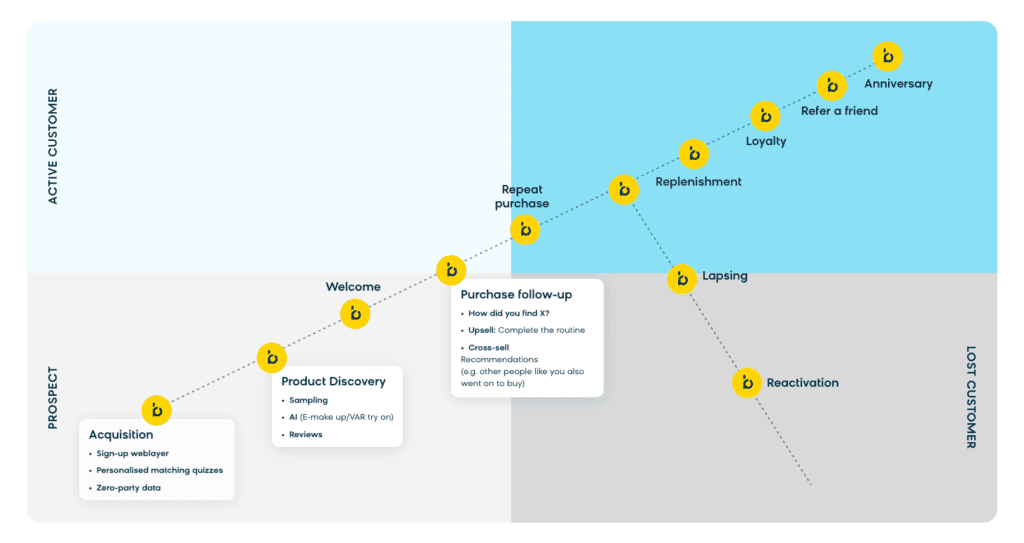
Level Up Your Beauty Marketing With Bloomreach
Modern problems need modern solutions. As your customers evolve, you need to leverage the power of AI to drive revenue smarter and faster. With Bloomreach Engagement and Loomi AI, you can ensure a seamless customer experience across every channel, in real time, and at scale.
Bloomreach has a proven track record of helping beauty brands succeed. Ready to get started? Request a demo today and learn how you can drive big results for your brand.

